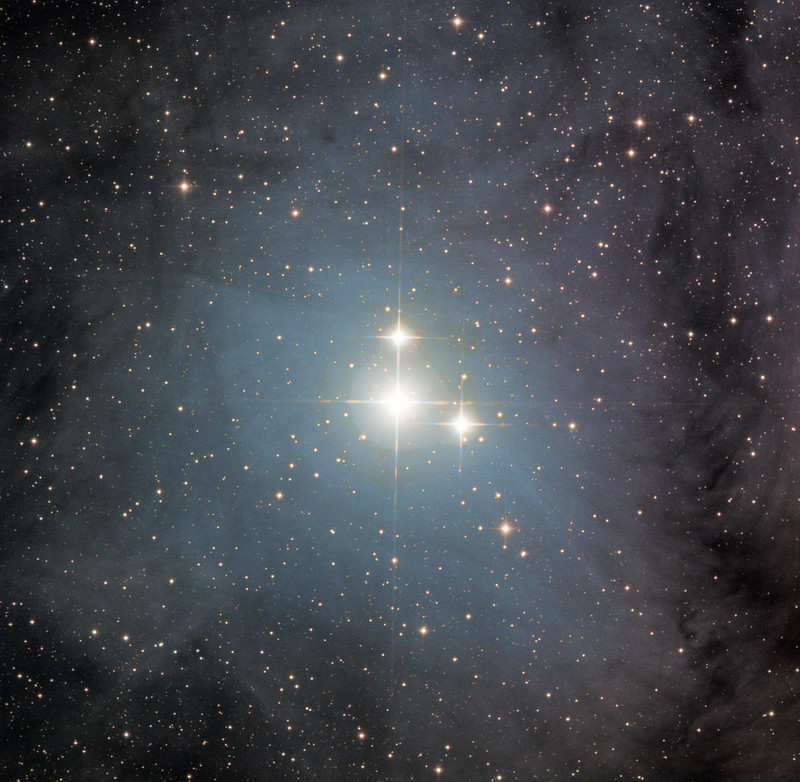The Blinking Planetary (Caldwell 15). KG Observatory, Julian CA.
1st of 3 objects for the July Dark cycle.
This object got my attention from a 58 hour multiple-exposure capture by Mark Stiles using a Skywatcher MN190...
www.astrobin.com/359794/
I was curious if I could get similar results in just a few hours using only 5-minute exposures in Ha, OIII, R, G and B.
The 16803 CCD could not do it. It would require many hours of both 15 minute and 5 minute exposures to capture both the faint outer halo without over exposing the core.
This is where the ASI6200MM Pro CMOS really shines. After lots of experimentation, I found this amazing CMOS camera allowed me to get nearly the same SNR using 1 hour of 5-minute exposures as the 16803 using 5 hours of 15 minute exposures. And then I'd need to take another set of 5-minute exposures with the 16803 for a well-exposed core. With the 6200, I could do it all with just 5-minute exposures in under 5 hours. The 16803 would have needed closer to 15 hours for the same results with much more processing to blend the 5 and 15 minute exposures.
"When observers look directly at Caldwell 15 through a small telescope, they typically see only the nebula’s sparkling-white central star. However, by averting one’s gaze, glancing away from the central star, the nebula's bulbous dust clouds come into view. This optical trickery earned this planetary nebula the name the "Blinking Planetary.”
The Blinking Planetary’s bright, white remnant star — known as a white dwarf — is surrounded by a greenish orb of gas and dust, the outer layers of the burned-out star that jettisoned into space. This cloud is flanked on both sides by bursts of red gas called FLIERS, or fast low-ionization emission regions. In these relatively young features, electrically charged atoms shoot off into space at supersonic speeds.
Also known as NGC 6826, Caldwell 15 is about 2,200 light-years away from Earth. Young and small, the planetary nebula is only about a thousand years old and less than half a light-year across."
https://www.astrobin.com/enu7t1/ Centaurus A by Scotty Bishop, on Flickr
Centaurus A by Scotty Bishop, on Flickr Centaurus A by Scotty Bishop, on Flickr
Centaurus A by Scotty Bishop, on Flickr
 NGC 5256 - An ongoing cosmic collision by William Ostling, on Flickr
NGC 5256 - An ongoing cosmic collision by William Ostling, on Flickr RhoOphiuchiClose by Scotty Bishop, on Flickr
RhoOphiuchiClose by Scotty Bishop, on Flickr
 Young crescent Moon with Venus and Mars by Tom Glenn, on Flickr
Young crescent Moon with Venus and Mars by Tom Glenn, on Flickr A new look at NGC 6052 by William Ostling, on Flickr
A new look at NGC 6052 by William Ostling, on Flickr


 IC 1318 by Dave & telescope, on Flickr
IC 1318 by Dave & telescope, on Flickr IC1318C_SHO_RGB_v12 by Prathamesh Pavaskar, on Flickr
IC1318C_SHO_RGB_v12 by Prathamesh Pavaskar, on Flickr